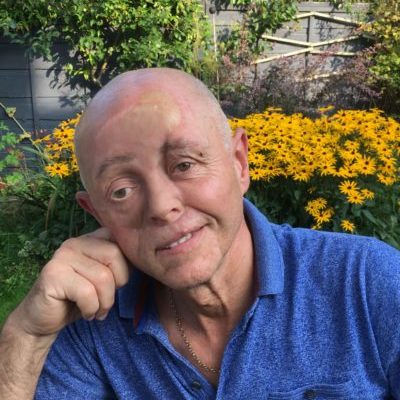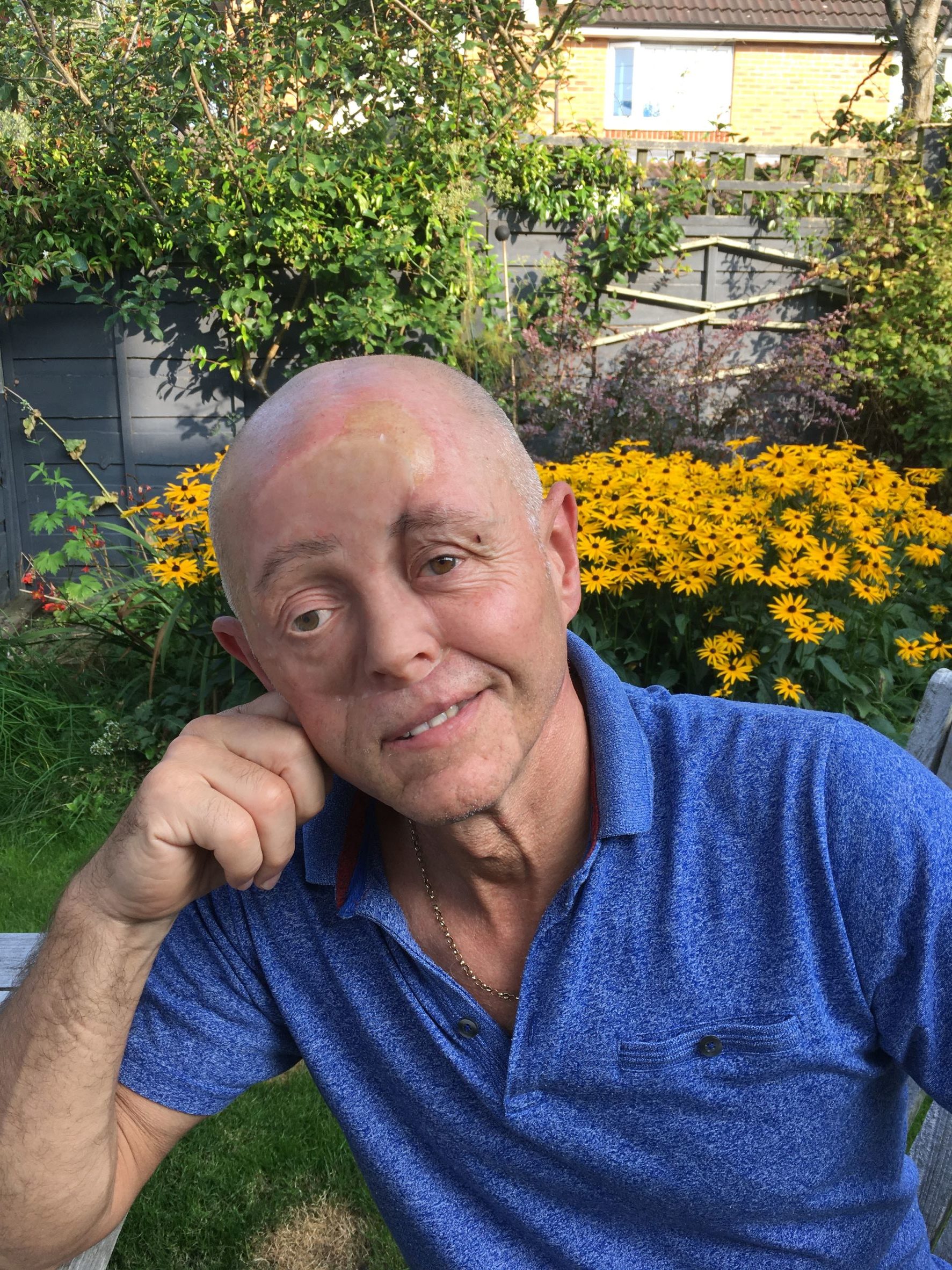The Author
Graeme Heward

In this short video, Graeme Heward shares his experiences of facial surgery, and project lead Fay Bound Alberti discusses what the humanities bring to medical images.
Before and After? What the humanities bring to medical images
AboutFace cares about the experience of patients and centres them as important historical narrators in the history of medicine. While before-and-after photographs serve an important medical function in recording a physical journey, our research goes behind these images to understand patients’ journeys, including the emotional and physical journey they go through. This video features Graeme’s story, and was produced by filmmaker Barry Gibb. Graeme is a physiotherapist who sits on our Lived Experience Advisory Panel (LEAP), and who has undergone more than 30 surgeries following a diagnosis of sinonasal cancer. Below the video, Graeme reflects on his feelings when watching it back.
Please note that this video contains graphic images of facial injury. If you would prefer not to view these, you can listen to the audio file below, or read the transcript here.
“The first thing I noticed on the video was the sound of my voice. It was a little nasally however I was articulating my words quite clearly. Even since that video my prosthetic has been improved and we are constantly trying to improve my appearance with facial stimulation and I’m looking forward to additional magnets soon to keep my prosthetic in better apposition.
It doesn’t make me feel sad to see the video. It shows how despite some pretty brutal surgery the body and mind does recover and offers a new beginning. As Fay says, it is not always a smooth passage through difficult times which I’ve described previously as a rollercoaster ride. It reminds me that the prosthetic (which I love) was spawned from a nasal reconstruction disaster not the initial consideration or intent of the surgeon. I hope that there has been some reflection of my case and that future patients might benefit from a different approach. I’m pleased the video will be up there. As a subject it is easier to appear on video than in person – it softens the connection and emotion.
The video shows some brutal images which demonstrate the reality of the situation. It also shows me smiling and happy in several frames. There are many images of different phases of facial surgery and disfigurement which help to demonstrate the journey. It is not just me who has to acclimatise to these changes. My partner, sons, family and friends quickly get used to my new appearances. They say it’s still me underneath! I think Fay describes the before and after as I feel it and my appearance and words are accurately portrayed.”
Transcript – Before and After Photographs: What the humanities bring to medical images
Graeme Heward:
My name is Graeme Heward. I’m 60 years old and I’ve been dealing with sinonasal cancer for over 10 years. I’ve had thirty-two ops, two bouts of radiotherapy, and two chemotherapy cycles, and my average op duration is 3-4 hours. I’d say that six of those ops were absolutely brutal.
Fay Bound Alberti:
Before and after images have become so commonplace in 21st century culture, whether it’s weight loss stories or environmental impact, that we don’t notice anymore that we’re being led to interpret images in this way: as an absolute change from one state to another. Behind before and after photographs of facial transformation is a messy world that often includes adjustments, pain, failures, hope, maybe acceptance. AboutFace explores the history and cultural meanings of face transplants and facial surgery, and one of the key themes that we work with is the idea of ‘before-and-after.’ We take an interdisciplinary, historically informed approach to look at what’s happening when we put together images in a particular way, including the psychological transformation that is expected to accompany a physical one in the before-and-after sequence.
Graeme:
Radiotherapy, I had twice for mopping up following tumor removal. On each session, I endured a plastic mask formed to my face and shoulders that pinned me to a solid plinth. It was horrendous and it brought me to my knees. I was referred by my ENT [ear, nose and throat] specialist to a plastic surgeon. It didn’t go well. The surgeon tried to recover the situation in a further three brutal operations. On reflection, I had a very poor, life threatening experience, with a consultant who I felt was experimenting on me.
I’ve had some crazy appearances throughout my journey. Most notable was a pedicle graft from my forehead to my nose, which resembled the shape of a penis. And the second was a flap graft, from my thigh to my face, which looked like a panty-pad stuck to my face. I’m on my third prosthetic now, in three years. Each time it is a better likeness of my former self. I feel like I’m clawing back something that had been taken away, principally by the cancer.
Fay:
Now this ordering of before-and-after, which makes complete sense from a medical perspective in showing the visible impacts of surgery, matters because it implies a journey that it is not always as straightforward as it seems. AboutFace considers the language and framing of transformative surgeries in visual images, and asks how can we connect to and explore these stories that are hidden from view? Working with people like Graeme helps us to see why it is that bringing together arts and humanities approaches, that look at the history and the ordering of medical photography, for instance, reveals new insights about the social and emotional impacts of surgery. It also helps us think about the cultural meanings of facial transformation in a more human centred way.
Graeme:
My modus operandi has always been to carry on as normal, then other people will follow suit. In ten years of facial disfigurement, I’ve had very little trouble with comments. It’s mostly staring. I’m not for adults staring, but for kids I think that it’s an opportunity to learn something new and how to behave. They’re fascinated by something different and I answer them honestly, like “where’s your eye gone?” Well, it’s a fair question! Smile and the world smiles with you. If I can laugh at myself, then other people can too.



